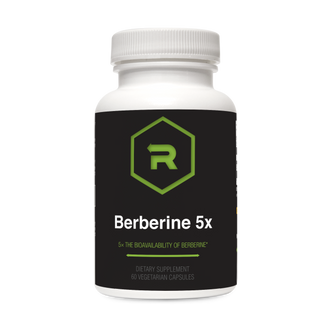The human body makes 3 different estrogens and all 3 are important to optimal health. Estrogens are hormones. Hormones are chemicals that result in a cellular change when they bind to their receptors which are often in distant tissues. They are a way that the body communicates with itself.
Estrogen Receptors
Estrogens are hormones that bind to estrogen receptors. There are 2 different estrogen receptors known as α and β. There are different concentrations of these receptors in different tissues and activation of these receptors results in different results.
α estrogen receptors are primarily found in the endometrium in the uterus, breast cancer cells, and hypothalamus. Males have these α estrogen receptors in the efferent ducts of the testis. Stimulation of the α estrogen receptor (ERα) stimulates cell growth.
β estrogen receptors are found in the brain, bone, lungs, heart, kidney, prostate, intestinal mucosa, endothelial cells and ovarian granulosa cells. Stimulation of the β estrogen receptor (ERβ) decreases cell growth.
The 3 different estrogens bind to the different estrogen receptors with different affinities. Basically, each ‘likes’ the different receptors differently. These different receptors allow for different responses in different tissues.
Estrone

The first estrogen is estrone, also known as E1. It is called E1 due to the fact that it has only one hydroxyl group. Estrone commonly converts back and forth to estradiol via the enzyme 17β Hydroxysteroid Dehydrogenase (17β HSD).
Estrone preferentially (80%) binds to the α estrogen receptor (ERα). It is the predominant hormone during menopause. Many researchers believe that high levels of estrone increase a woman’s risk of breast cancer.
Estradiol

Estradiol is also known as E2 due to it having 2 hydroxyl groups in its structure. Estradiol is produced by aromatization (via the aromatase enzyme) from testosterone or by conversion via 17β HSD from estrone as described above.
Estradiol is the most potent estrogen. It is approximately 10 times more estrogenic than estrone and 80 times more than estriol. It binds equally to the α and the β estrogen receptors.
Some of the benefits of estradiol include: increases HDL, decreases LDL & total cholesterol, decreases triglycerides, helps maintain bone structure, increases seratonin, decreases fatigue, antioxidant, improves memory, helps absorption of calcium, magnesium, and zinc
Estriol

Estriol is also known as E3 due to the presence of a 3rd hydroxyl group. It is produced by conversion of estrone through the 16 hydroxy pathway. In other words, 16-methoxy estrone is the same thing as estriol. We’ll further discuss these pathways in another post. It is the predominant estrogen during pregnancy.
Estriol binds primarily (80%) to the β estrogen receptor. It is 80 times weaker than estradiol making it a weak estrogen. It can decrease LDL and increase HDL. It can also help control menopause symptoms. It helps reduce pathogenic bacteria and helps the GI tract maintain a favorable environment for the growth of lactobacilli. It also helps restore the proper pH of the vagina, which prevents urinary tract infections.
There is considerable evidence showing that estriol has a protective effect against breast cancer. Experimentally, estriol is being used in breast cancer patients. There is some controversy about this topic and understanding cancer initiation and cancer promotion explains the disparity.
These are the 3 estrogens that are produced in the human body. After menopause, estradiol production declines dramatically and can result in a number of issues including hot flashes, osteoporosis, and numerous others.
If there is a hormone deficiency that requires supplementing with hormones then we should use bioidentical hormones. We should be using the same hormones as produced in the human body. Why would we consider anything else?
Premarin was the first commercially available estrogen replacement. Premarin stands for PREgnant MARe’s UrINe. It is so named due to the fact that it is derived from the urine of pregnant horses. It is composed of estrone sulfate (50%), equillin sulfate (15-25%), and equilenin sulfate (25-35%). These hormones are often collectively called ‘conjugated equine estrogens’ (CEE). Note that none of these hormones are of the same structure as the estrogens in the human body.
Bioidentical hormone therapy uses estrogens of the exact same structure as those produced in the human body making the ‘bioidentical’. When considering hormone replacement therapy (HRT) there are a number of issues that need to be considered such as the hormones themselves, route of administration, and the metabolism of the hormones.
Optimizing health when using hormone replacement therapy addresses each of these issues and we’ll discuss more of these components in other posts.
References
- http://www.ncbi.nlm.nih.gov/pubmed/19179815
- http://www.healthwatchersnews.com/2009/07/estriol-and-breast-cancer/
- http://www.lef.org/magazine/mag2008/aug2008_Estriol-Its-Weakness-is-its-Strength_01.htm


